|
|
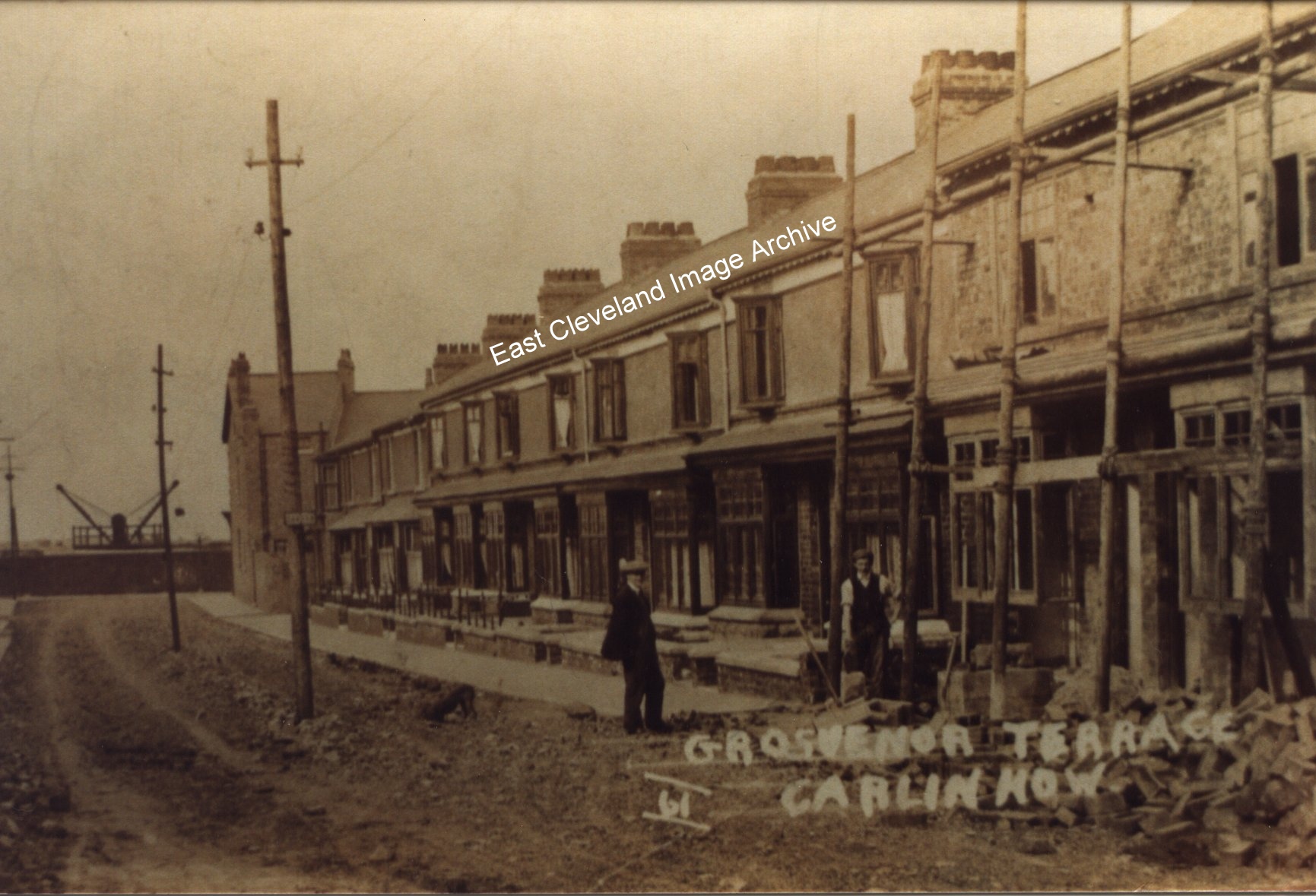
Initially the Archive noted this picture of Grosvenor Terrace in 1911 appeared to show completion of the terrace. However Alan Pearson advised: “This would only be completion of the half of Grosvenor Terrace up to Stan Massey’s house. The 1915 Ordnance Survey map seems to show the top half still uncompleted, although Queen Street, Coronation Street, and part of Gladstone Street are there by then”. However the image also provoked discussions; Derick Pearson advised: “Note the heavy gauge wood scaffolding that was used in those days. It took a lot more putting together than the man today could with a couple of spanners hung in his side pods and a handful of ready-made clips “. Eric Johnson also commented: ” I noticed the ‘double’ jib crane, in the background of the photograph, which appears to be inside the works. I have some knowledge of steelworks machinery, but this construction puzzles me”. Derick Pearson assisted with: “I have only seen this once before at Warrenby Steelworks in the mid 1960s. It was mounted on a long bed railway truck. It was not a Jib Crane, but a different configuration altogether. Now if it was on a truck as the one I saw at Warrenby, could it have been Railway equipment? More importantly, there were differing dates for the filling in of the viaduct and the work which went on around the lower lines under the viaduct, but as this is 1911 it could well have played a part in that work as the work was not complete until 1913 according to most sources. When the photo is zoomed in, one can clearly see lifted loads on both sides. The one on the right is high up about the height of the center rope drum top and the one on the left just above the sleeper fence/wall. Is it what might be called a Double Derrick type”. The Archive asks can anybody help in identifying the gentlemen in the photograph?
Image from a collection compiled by Derick Pearson; thanks to Eric Johnson, Derick Pearson and Alan Pearson for the updates.
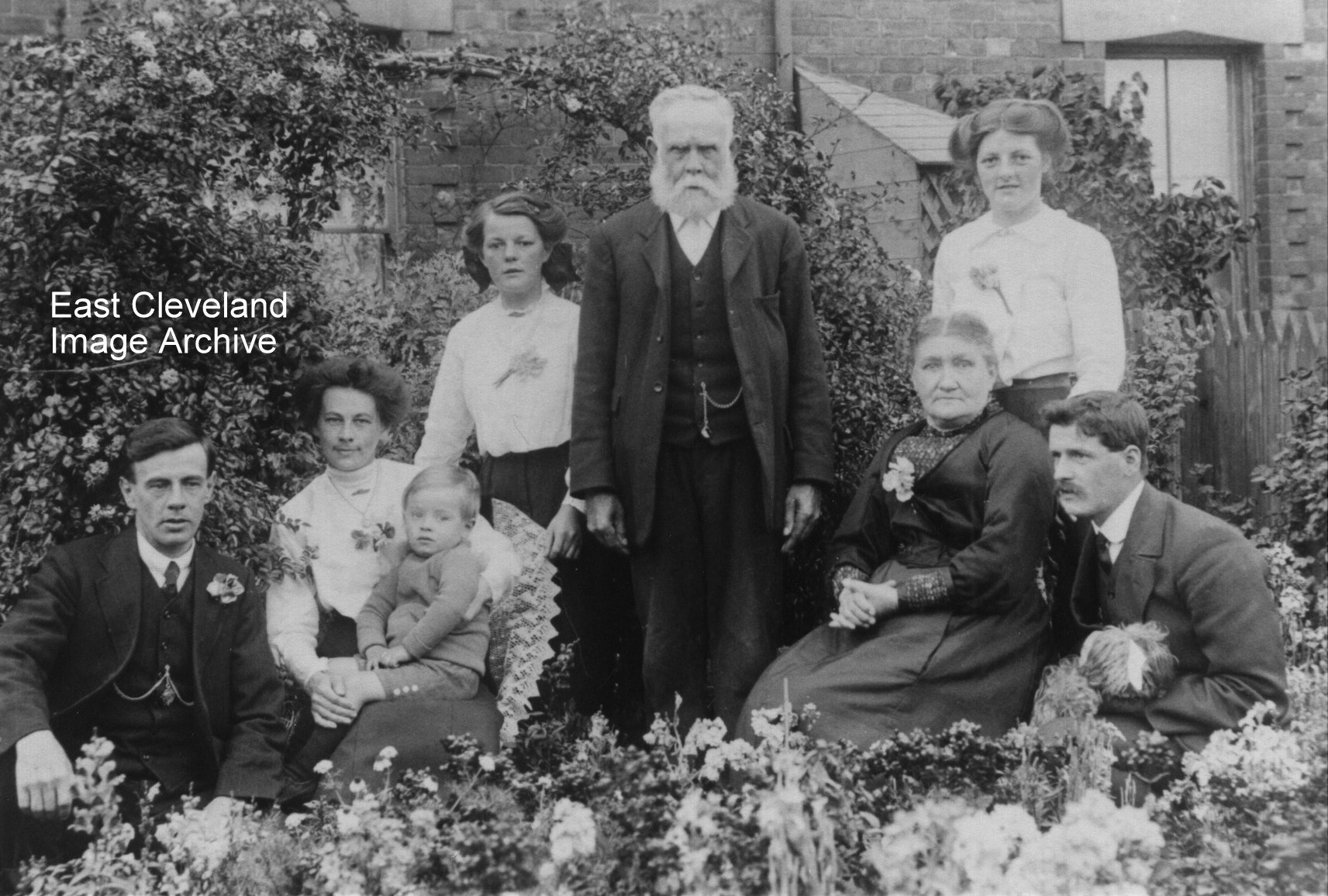
Knowing the title of this photograph was only part of the story; George Tremain advised us: “This photograph shows Charles Hall in the early 1900’s with his wife Margaret Elizabeth (nee Ord) Hall. They are in the garden of their house in Front Street, Carlin How where they were living at the time of the photograph. Also on the photograph I believe is their daughter Clara (Hall) Nicholson and her husband Fred Nicholson. The small boy is their son Lesley Nicholson. The two young ladies are I believe Emily Jemson (behind Margaret) and Mary Jemson (my grandmother) beside Charles Hall.” Researches by the Archive using the 1911 Census indicate that Charles and Margaret Hall lived at 7 Front Street, Carlin How; their daughter Clara and husband Fred lived at 2 Kennedy Crescent. At that time Clara and Fred had been married for two years and had no children, so giving a date to this image of 1914 or 1915.
Image from a collection by Derick Pearson and information supplied by George Tremain.
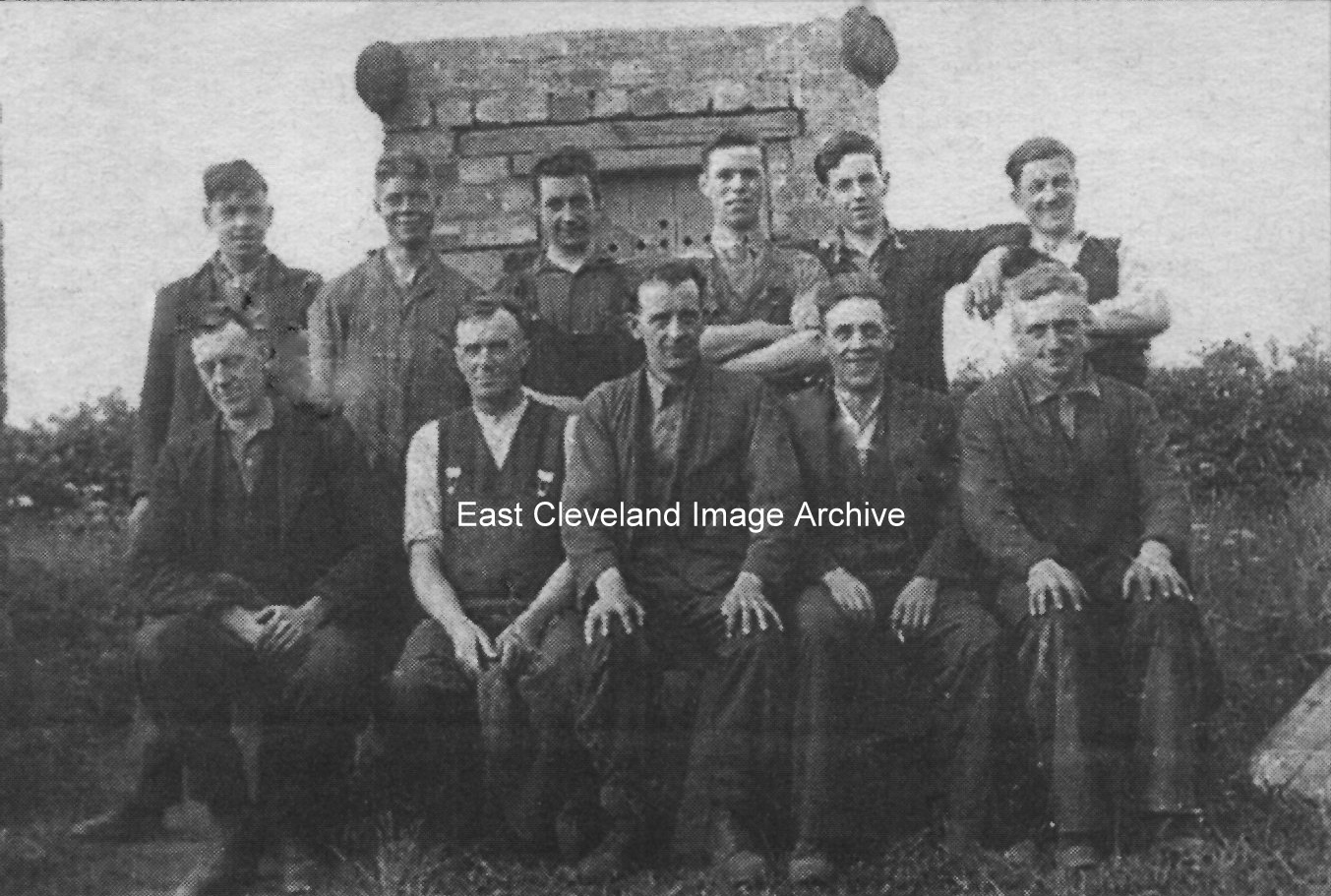
The image is taken from an Evening Gazette ‘Remember When’ article from a newspaper cutting of 1940 and shows the surface workers. Some can be identified from the article: but can anybody assist with additional names?
Back Row: ?? , Percy Gott, ?? , Les Marsay, ?? , ?? .
Front Row: ?? , Bert Hicks, ?? , Bill Young, ?? .
The cutting came from a collection compiled by Derick Pearson.
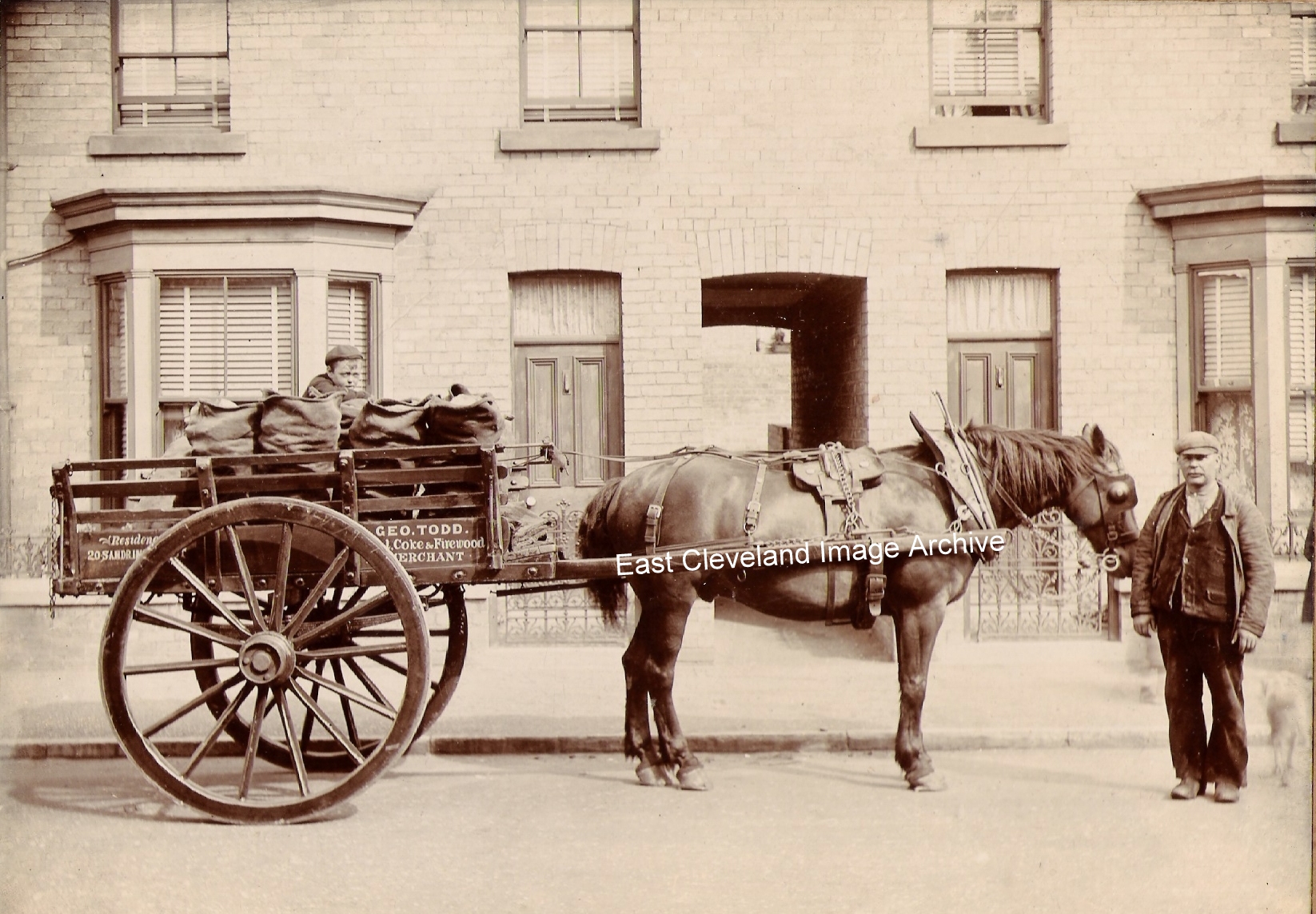
Who the devil is George Todd we hear you ask! Norman Patton can tell you in his own words: ”George Todd traveled to North Skelton with his parents and several brothers from Rillington near Malton around 1870. They took up residence at No 17, Richard Street, North Skelton and, of course, found work in the local pit. This can all be verified by examining the 1891 census for Skelton. George’s dad had been a platelayer; probably connected with the new railway construction and George himself had an unsurprising affinity with horses which helped him to find his first job at the pit as a horse driver.” In the picture, George is about 40 years old and it can be seen from the writing on the cart that he is a Coal Merchant operating his own business out of 20 Sandringham Street, in Scarborough. He was by then married and had a daughter who would be about 8 years old. The picture was taken in 1900 and the lad is Lawrence Todd, George’s nephew, who would have been holidaying with his Aunt and Uncle George. In the 1901 census, Lawrence aged 9 years is living at 17 Richard Street with his other uncle and his grandmother. Lawrence eventually began work in the North Skelton mine and eventually became the ”Check weigh man”, Union man and subsequently a Skelton Town Councillor. Sadly, George’s wife died young and possibly in childbirth. George struggled with his business and young daughter and soon returned to Cleveland and back to the pit!” Those of you who know the Archive well enough know that it has a passion for Family History and one of the axioms we keep preaching is that Family History must tell a story. The Archive was taken by this photograph (which has been made younger only by removing some of the browning that age causes) and by Norman’s storyline. So we make no apologies for reproducing it in full – it gives a fascinating insight into a beautiful photograph! Norman Patton also tells us ”I now believe this picture to have been taken in Wykeham Street in Scarborough.”
Many thanks to Norman Patton for the story and the update.
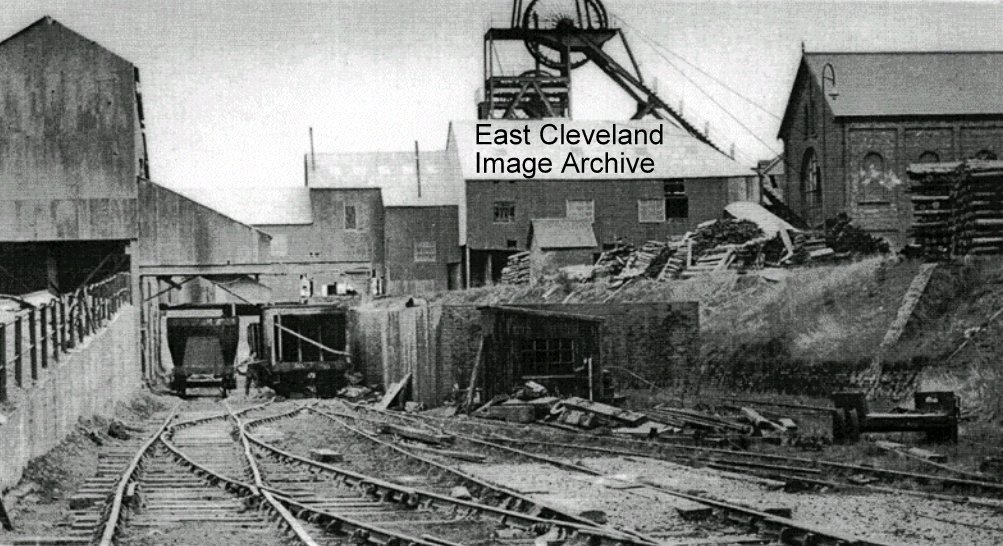
A very busy looking photograph of Lingdale mine; looking down the ore loading track, picking belt to the left. Downcast shaft with the big wheels and beside it the engine house, lots to see here.
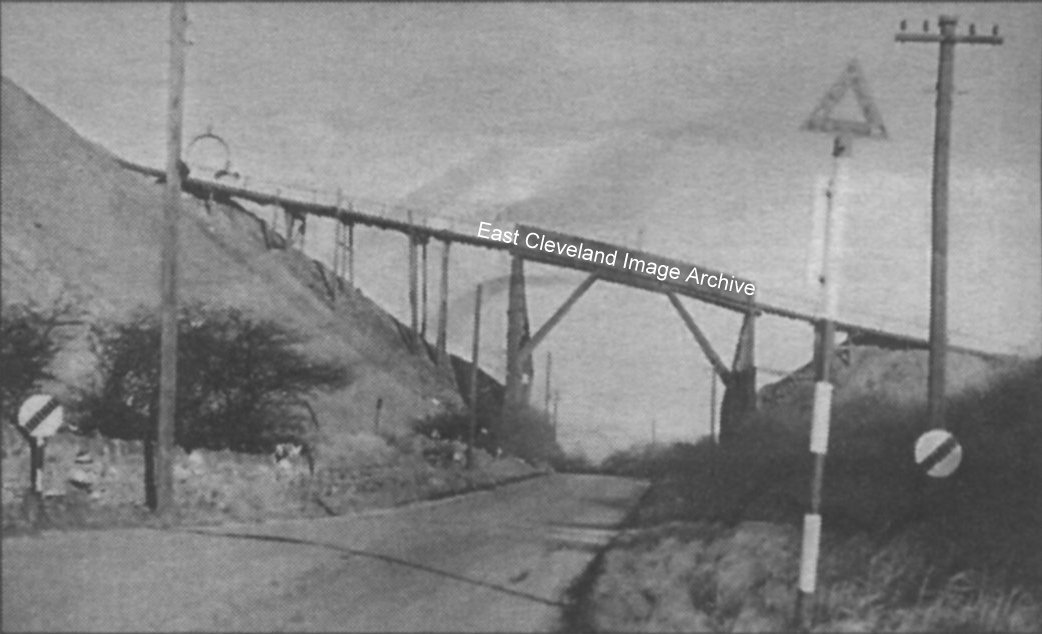
A lovely clear photograph of Claphow Road with Stone catching bridge demolished in the 1950’s; but when in the 1950’s ? Any advice is welcome.
George Searle tells us: “I remember my sister Enid and I walking under this and one of the buckets over tipped spilling its load onto the road just in front of us. After that each time we walked down the road we made sure that no full buckets were crossing overhead.”
Alan Etherington advises: “I recall standing just about where the photographer was standing waiting for a bus to Gerrick. Later in life, 1961, I worked on a building site on Lakes Estate, Redcar, when I was straight out of school and one Horace Marson was said to have bought the vast spoil heap and was using it to fill in the footings of the houses being built. So the bridge would have gone by then.”
Thanks to George Searle and Alan Etherington for the updates.
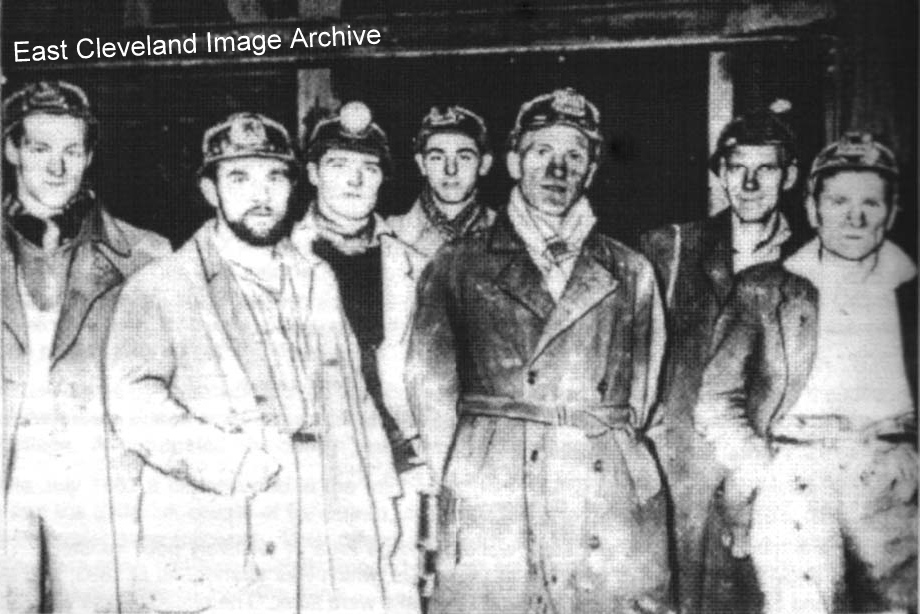
We asked: ”Can anyone name any of the men coming off the last shift at Lingdale Mine in 1962?” Natasha tells us: ”My Grandad Ernie Thompson second from right.”
Many thanks to Natasha and Peter Appleton for the for the updates.
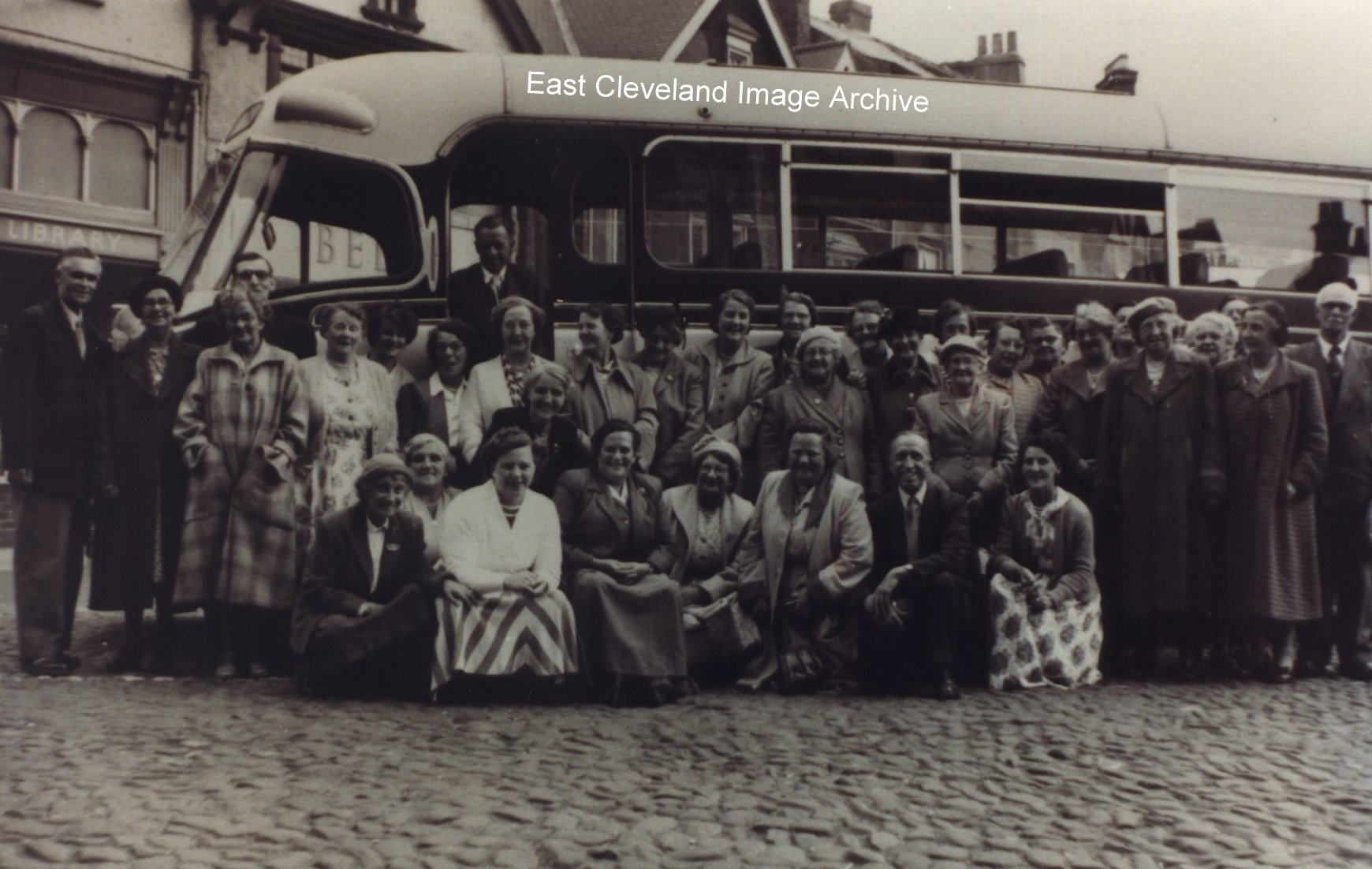
Although we know this is a Mother’s Union trip and the approximate period, can anyone advise on the correct date of this trip, where it went and who the ladies are? Can anybody assist?
Derick Pearson tells us: ”Kneeling (front right) Connie Husband, formerly of Coronation Street, Carlin How; second left (back row) Mrs Kitchener, Ida’s Mam who lived at the bottom of Stevenson Street, Carlin How; from the early 1950s. Others on the photograph are Mrs Jefferson (center back) and Mrs Appleby (second left kneeling).”
Image from a collection compiled by Derick Pearson, thanks to Derick for that update.
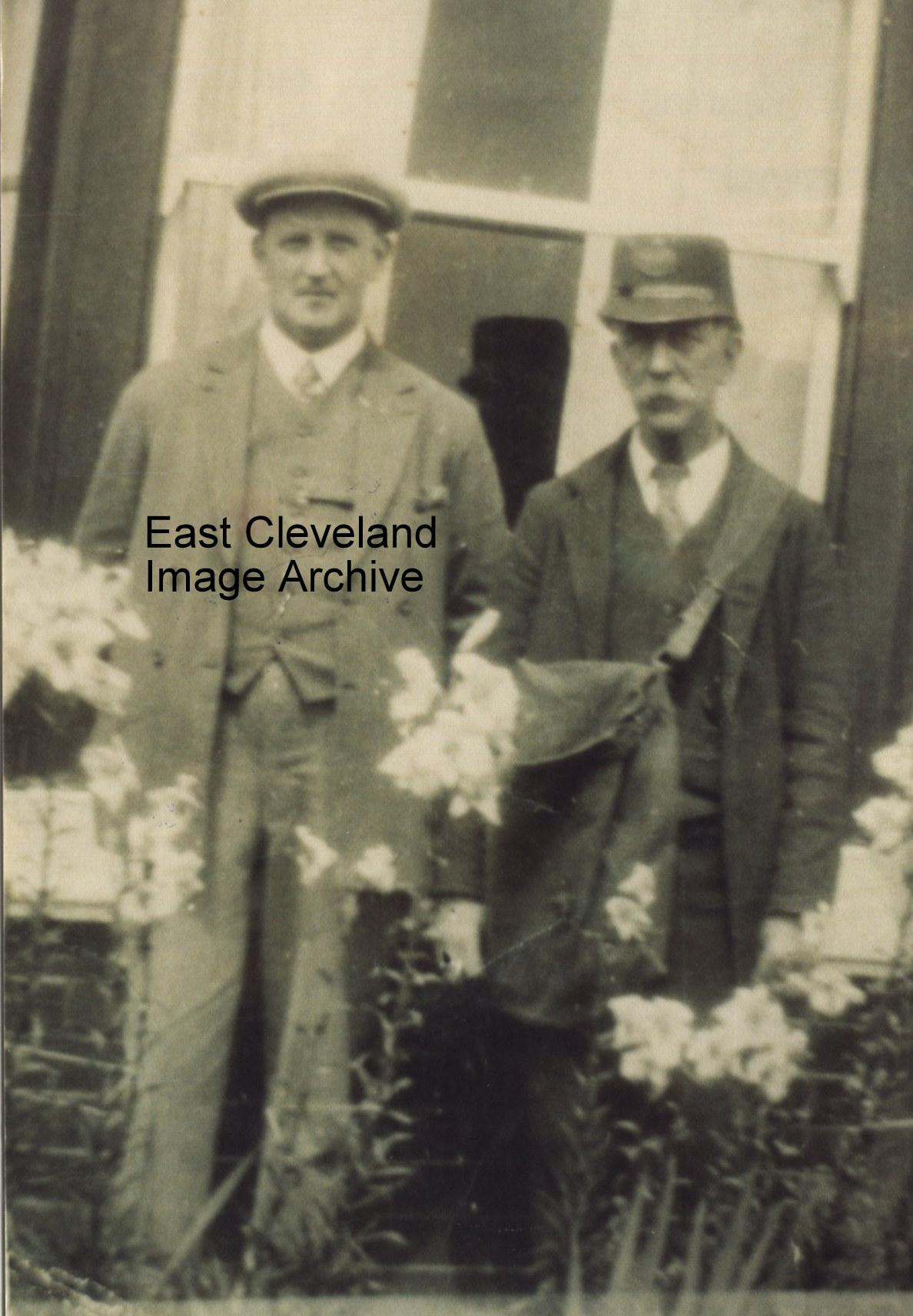
Pictured in 1935, on Mount Pleasant, Carlin How; is the postman, Mr Thomas Adamson Richelieu. Mr Richelieu was also the owner of the Post Office, photographer and printer; the man with him is Fred Cox, with some beautiful lilies in the foreground. The Richelieu Typo postcards and photographs were produced by Mr Richelieu and his family.
Image from a collection compiled by Derick Pearson, details of Mr Richelieu courtesy of Ancestry and Find My Past.
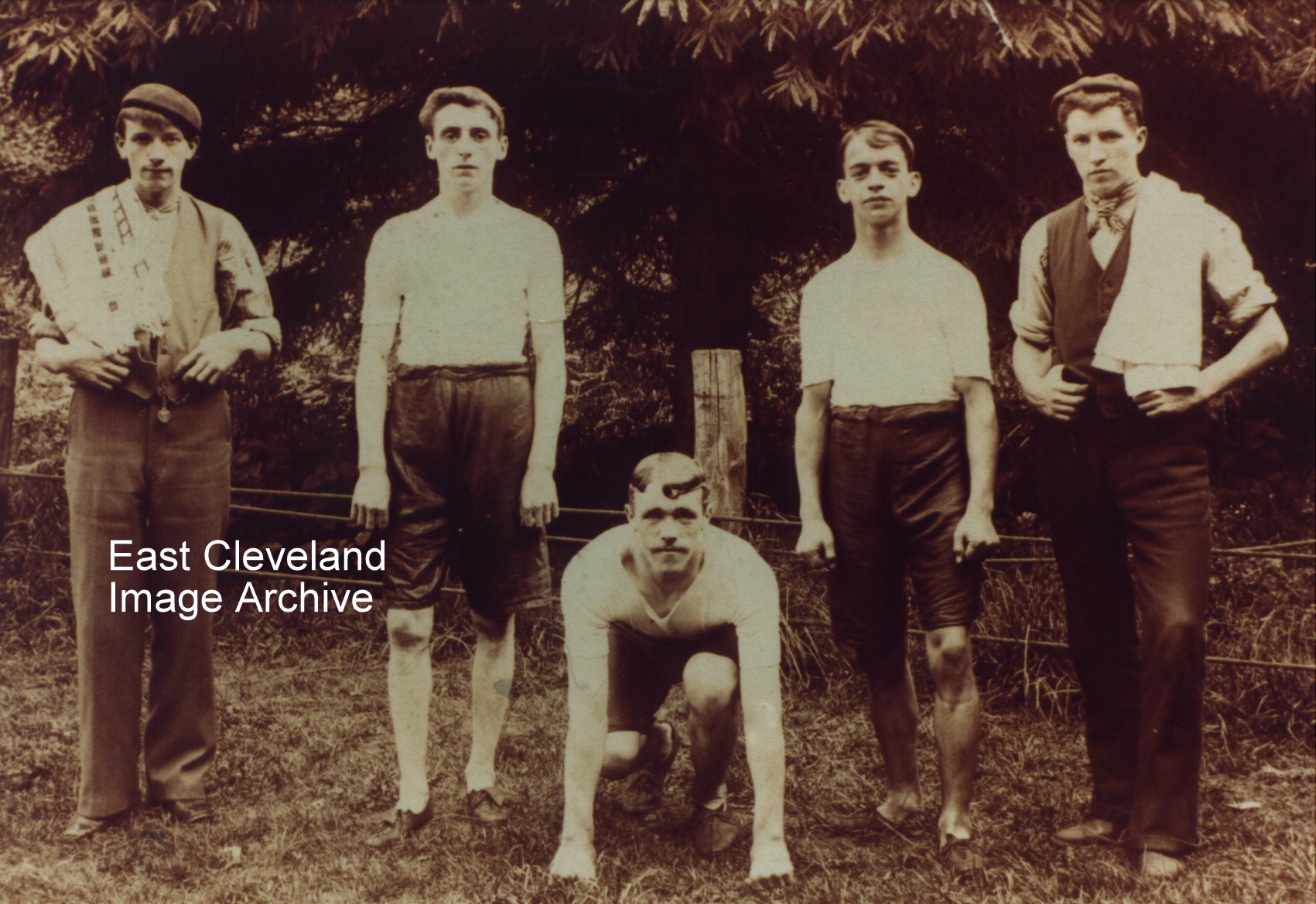
The title Nicholson Runner’s was attached to this image when it was first made available to the Archive, however no other information was available at that time. Tony Nicholson has advised us: ”Fred Nicholson, my grandfather; is second from the right. He was a good mile runner and because of his dark complexion was nicknamed ‘Darkie’ by the miners who used to bet on his races. I have a copy of this photograph in our family archive, but don’t have any details of the other men. They may have been Fred’s brothers, but I’ve never heard them described as such. I suspect they were other members of the same local athletic club. My grandfather was born in the early 1880s, so I think this dates from the early 1900s.”
Image courtesy of Dot Verrill, from a collection compiled by Derick Pearson and many thanks to Tony Nicholson for the information update.
|
|










Recent Comments